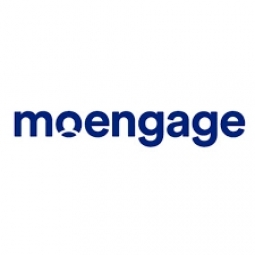Technology Category
- Networks & Connectivity - 5G
- Platform as a Service (PaaS) - Application Development Platforms
Applicable Industries
- Buildings
- Cities & Municipalities
Applicable Functions
- Procurement
- Sales & Marketing
Use Cases
- Behavior & Emotion Tracking
- Livestock Monitoring
About The Customer
Luxstay is an online short-term rental platform and hospitality service based in Ho Chi Minh City, Vietnam. Established in 2016, Luxstay aims to bridge the gap between homeowners and travelers, making independent travel more accessible and helping homeowners generate more revenue from their properties. Luxstay provides a wide range of accommodation options like apartments, villas, studios, and houses across sought after Vietnamese holiday destinations. With over 15,000 listings, Luxstay records about 20,000 monthly bookings growing at a monthly rate of 20%.
The Challenge
Luxstay, an online short-term rental platform based in Vietnam, was facing challenges in its user engagement strategy. The home-sharing market in Vietnam is highly competitive, requiring Luxstay to provide personalized and consistent communication across all channels. However, their existing marketing automation platform had limitations, including a lack of user behavior analysis, connectivity gaps in channels, and no proper continuity in user engagement. These issues were negatively impacting the brand's active usage and conversions. The COVID-19 pandemic further complicated matters, as Luxstay needed to maintain consistent communication with users throughout the ongoing uncertainty. The team wanted to understand user behavior, segment users based on various attributes, and unite all engagement channels. However, their current solution was not able to meet these needs, leading Luxstay to seek a platform that could offer a more unified engagement.
The Solution
In response to the increasing gaps in engagement and the peak of the COVID-19 pandemic, Luxstay's marketing team decided to employ a different user engagement platform. After careful consideration and rigorous research, they chose MoEngage. This platform allowed Luxstay to automate engagement, segment users, and personalize communication. Luxstay's team first used MoEngage's Custom Segment to collate and analyze customer data, which helped them understand purchase behavior and user interaction with their app and website. This understanding allowed Luxstay to personalize the user experience by matching customer demand to available properties. Luxstay also used data from MoEngage to segment users into four categories: solo travelers, couples with no infants, couples with one or more children, and friends traveling together. These users were further segmented based on their behavior, such as the price range of accommodation, type of occupancy, and location. This segmentation allowed Luxstay to personalize their communication and improve conversions.
Operational Impact
Quantitative Benefit

Case Study missing?
Start adding your own!
Register with your work email and create a new case study profile for your business.
Related Case Studies.

Case Study
Turning A Stadium Into A Smart Building
Honeywell created what it called the “intelligent system” for the National Stadium in Beijing, China, turning the venue for the opening and closing events at the 2008 Summer Olympics into a “smart building.” Designed by highly controversial artist Ai Weiwei, the “Bird’s Nest” remains one of the most impressive feats of stadium architecture in the world. The 250,000 square meter structure housed more than 100,000 athletes and spectators at a time. To accommodate such capacity, China turned to Honeywell’s EBI Integrated Building Management System to create an integrated “intelligent system” for improved building security, safety and energy efficiency.

Case Study
Energy Saving & Power Monitoring System
Recently a university in Taiwan was experiencing dramatic power usage increases due to its growing number of campus buildings and students. Aiming to analyze their power consumption and increase their power efficiency across 52 buildings, the university wanted to build a power management system utilizing web-based hardware and software. With these goals in mind, they contacted Advantech to help them develop their system and provide them with the means to save energy in the years to come.
.png)
Case Study
Smart Street Light Network (Copenhagen)
Key stakeholders are taking a comprehensive approach to rethinking smart city innovation. City leaders have collaborated through partnerships involving government, research institutions and solution providers. The Copenhagen Solutions Lab is one of the leading organizations at the forefront of this movement. By bringing together manufacturers with municipal buyers, the Copenhagen Solutions Lab has catalyzed the development and deployment of next-generation smart city innovations. Copenhagen is leveraging this unique approach to accelerate the implementation of smart city solutions. One of the primary focus areas is LED street lighting.

Case Study
Buoy Status Monitoring with LoRa
The Netherlands are well-known for their inland waterways, canals, sluices and of course port activities. The Dutch Ministry of Infrastructure indicates that there are thousands of buoys and fixed items in and near water environments that would profit from IoT monitoring. One of the problems with buoys for example, is that they get hit by ships and the anchor cable breaks. Without connectivity, it takes quite some time to find out that something has happened with that buoy. Not to mention the costs of renting a boat to go to the buoy to fix it. Another important issue, is that there is no real-time monitoring of the buoys at this moment. Only by physically visiting the object on the water, one gains insight in its status.

Case Study
Barcelona Case Study
Barcelona’s heavy traffic and its associated high levels of pollution were the primary factors that motivated some companies and universities to work on strategies for improving traffic in the city centre. Bitcarrier is one of the technologies involved in the In4Mo Project, whose main objective is to develop the applications that form the core of smart mobility, one of the fundamental pillars of the smart city concept.








